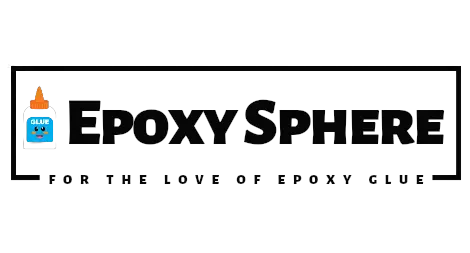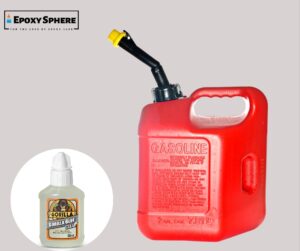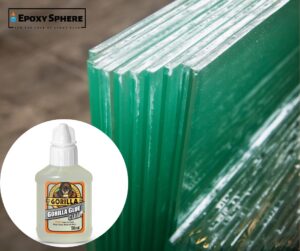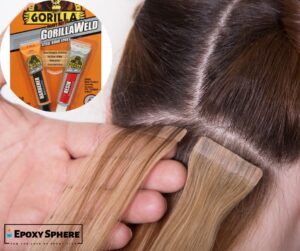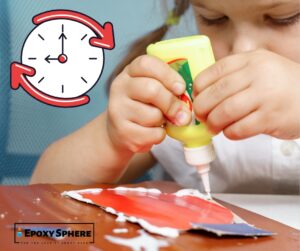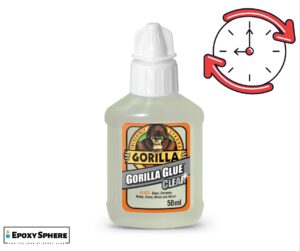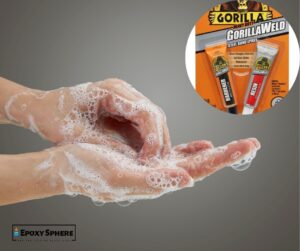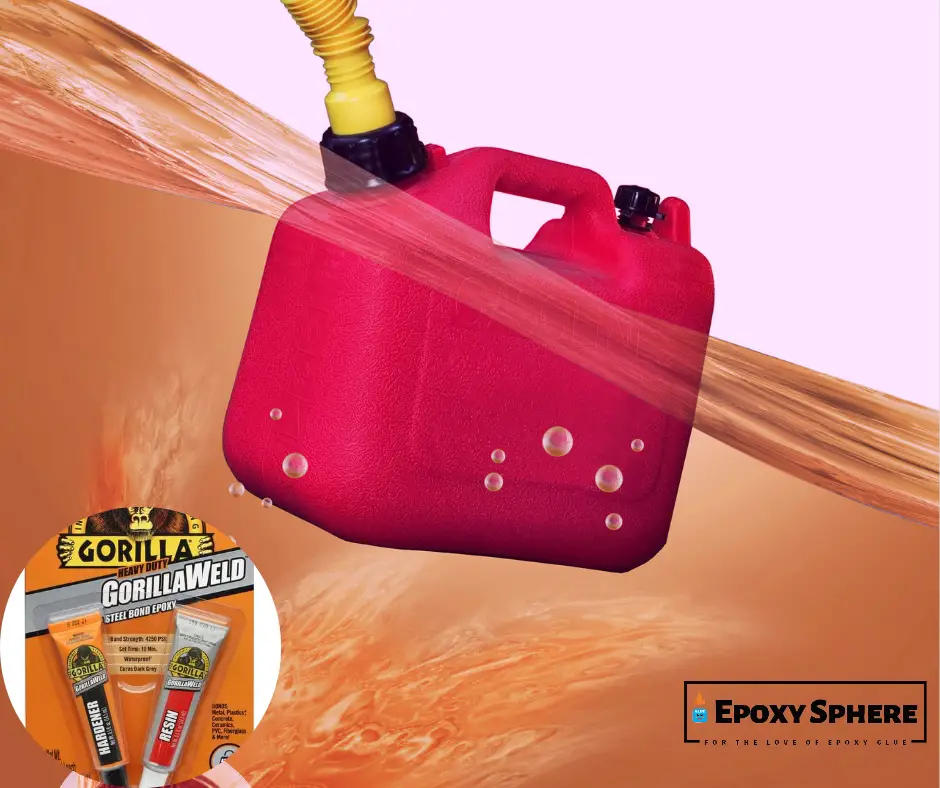
There are many situations where you may need to apply Gorilla Epoxy in dry, damp, or even wet conditions. Gorilla Epoxy will bond to virtually any substrate, including plastic, metal, wood, ceramic, tile, glass, brick, and more.
Gorilla Epoxy is a non-sagging formula for vertical surfaces and overhead applications. This product fills voids and bonds on uneven and steep surfaces. But is gorilla epoxy gasoline resistant?
Is Gorilla Epoxy Gasoline Resistant?
Not all gorilla epoxies are gasoline resistant. This is because different products are often made from different ingredients. That said, you can get gorilla epoxy that is gasoline resistant if you take the time to search for such products.
Can I Use Gorilla Epoxy To Fix Holes On Fuel Tanks?
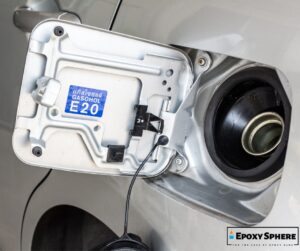
You can use Gorilla Epoxy to repair holes in fuel tanks, but it’s not the ideal product for such a task. It’s important to note that not all Epoxy is gasoline resistant, and many will lose their bond strength when exposed to the elements.
However, this does not mean that you should use it as an adhesive on your fuel tank to fill up your car with gas afterward.
Because Gorilla Epoxy is a two-part epoxy resin system, it takes 24 hours for the two parts to cure together into one solid piece. If you were to use this product to replace existing sealant or adhesive on your fuel tank, think twice.
Why You Shouldn’t Use Regular Epoxy on Gas Tanks
It is widely known that regular Epoxy is not gasoline resistant. Gasoline is much stronger than the bond strength of most epoxies and will dissolve any epoxy that comes in contact with it. Additionally, once dissolved by the gasoline, regular Epoxy will lose its bond strength and will no longer hold your tank together, leading to leakages.
Not made for use in such a manner
Most Gorilla Epoxy brands are specifically designed for use on wood and other non-porous surfaces. You may be able to use it on porous materials like concrete or drywall successfully, but these are not ideal substrates for Epoxy.
You should also avoid using regular Epoxy on gasoline-soaked items or items that come in frequent contact with gasoline. If you want to secure a strong bond between two materials that will be exposed to gasoline in their lifetime, consider using an adhesive made for such a purpose.
Will Most Likely Dissolve upon Contact with Gasoline
Regular gorilla epoxy will often dissolve when they come in contact with gasoline or other solvents of this nature. Most products used regularly have been tested for resistance to certain chemicals and liquids, including gasoline. If you find yourself needing to fix your fuel tank, it’s best not to rely on regular gorilla epoxy.
Will Lose Its Bond Strength
Epoxy will lose its bond strength if it is exposed to gasoline. It can no longer repair your tank, and you will be back at your initial stage. Even when fully cured, gasoline is powerful enough to break the bond strength between your Epoxy and the walls of your container leading to a gradual loosening of the Epoxy.
What Epoxy Can I Use On Fuel Tank Repairs?
If you have a fuel tank repair, you’ll need to use a high-quality epoxy formulated for use on metal. The Epoxy should also be designed for use on fuel tanks and have a high-strength bond to the metal sheeting of your tank.
To determine if epoxy will work for your project, look at the label to make sure it complies with industry specifications. This means that it has been tested by an independent third-party lab and meets specific performance standards.
It’s important to note that some polyester resins on the market claim to meet these specifications but do not actually pass muster. Make sure you find one that does before buying your Epoxy off the shelf.
That said, here are some epoxy products that have been tested and proven to work on fuel tank repairs:
MAX GRE A/B epoxy
The MAX GRE A/B epoxy is a two-part resin and hardener. It is used for repairing cracks, holes, and other defects in concrete, plastic, and metal surfaces. This Epoxy is also used for bonding, sealing, and coating applications where maximum strength or chemical resistance is required.
The MAX GRE A/B epoxy is suitable for gasoline tanks since it’s specifically formulated to resist gasoline and other solvents of a similar class, such as diesel fuel or kerosene. It is also suitable for use as an impregnating resin for fiberglass, carbon fiber, and other fabrics used to make composite fuel cells.
MAX GRE A/B epoxy has excellent adhesion characteristics to many substrates, including metals like aluminum alloys. This makes it ideal when bonding composite structures that may come in contact with gasoline or diesel fuels.
It is highly resistant to swelling, softening, and loss of adhesion from direct contact with modern gasoline fuels. MAX GRE A/B epoxy resists sudden mechanical impact and cryogenic temperatures to cap its performance.
JB Weld Epoxy
JB Weld is an epoxy brand known for its strength in bonding well with fuel tanks. It’s a brand of Epoxy that is gasoline resistant and also known to be “Gas Tank Safe,” therefore, it can be used for gas tank repairs.
And when fully cured, it becomes chemically resistant to petroleum, hydraulic fluids, and other chemicals. It is also resistant to high temperatures, making it ideal for automotive and industrial use.
Asides from use in a fuel tank, this hand-mixable two-part epoxy putty stick can cure underwater and is suitable for repairing plumbing, tub, shower drains, pools, and potable water tanks.
JB Weld epoxy takes around 25 minutes to set and cures fully in 1 hour with a clear, off-white color.
Permatex 12020 Instant Gas Tank Repair
The Permatex 12020 Instant Gas Tank Repair is a flexible epoxy resin adhesive that sticks to the metals used in your gasoline tank. However, you will get more value from using this Epoxy at room or slightly warmer temperatures.
After curing, you can drill, sand, thread, or file your Epoxy to achieve whatever design or state you want. And you don’t have to worry about damaging your work as it will still be resistant to fuels and most solvents after a total cure.
The repair kit may be used on metal, plastic, fiberglass, and more. It’s ideal for repairing fuel tanks in automobiles and other vehicles with vertical surfaces or overhead applications.
Does Epoxy Stick to Petrol?
Not all epoxies will stick to petrol, and many will dissolve upon contact with gasoline. Alternatively, you can use polyurethane glue instead. This is because most epoxies available are labeled 15-minute epoxy, which is not safe for fuel.
However, specific epoxies are made for use in fuel tanks that can resist gasoline. Most of these are often labeled as 30 minutes or 2 hours Epoxy, which are reasonably safe for fuel.
Conclusion
You can see many different ways to answer the question, “Is gorilla epoxy gasoline resistant?” For many, the answer is yes; however, it often depends on how much gasoline is in contact with the adhesive.
If you want to be as safe as possible when using Epoxy on a fuel tank, it’s best to use MAX GRE A/B or JB Weld epoxy since they are designed specifically for this purpose.

Hi, This is John Davis. After years of working in the construction industry, I decided to create a website that would provide people with information about glue and its exceptional uses. I hope You find it useful
